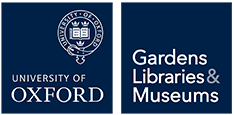From King Alfred to Chaucer: first graphic designers of english texts celebrated in new Bodleian Libraries exhibition
The origins of early English graphic design are explored in a new exhibition opening at the Bodleian Libraries' Weston Library.
Designing English: Graphics on the Medieval Page, open from 1 December 2017, brings together a stunning selection of manuscripts and other objects to uncover the craft and artistry of Anglo-Saxon and medieval scribes, painters and engravers.

Designing English looks at the skills and innovations of these very early specialists who worked to preserve, clarify, adorn, authorize and interpret writing in English. For almost a thousand years most texts had been written in Latin, the common European language. Beyond the traditions established for Latin, books in English were often improvisatory, even homespun, but they were just as inventive and creative. In an age when each book was made uniquely by hand, each book was an opportunity for redesigning. The introduction of the English text posed questions: How did scribes choose to arrange the words and images on the page in each manuscript? How did they preserve, clarify and illustrate writing in English? What visual guides were given to early readers of English in how to understand or use their books?
The exhibition explores all elements of design, from the materials used, such as the size and shape of animal skins used to create parchment, to the design of texts for different uses, such as for performing songs, plays or music. Medical texts and practical manuals feature alongside ornate religious texts, including rare examples of unfinished illustrations that reveal the practical processes of making pages and artefacts. The use of English is traced from illicit additions made to Latin texts, to its more general, every day use, and spread to more ephemeral formats.
The exhibition features incredible early manuscripts held in the Bodleian collections, one of the largest medieval collections in the UK, alongside loan items from the Ashmolean Museum, Oxford and the British Museum.
Highlights of Designing English include:
- The Macregol Gospels, one of the treasures of the Bodleian Libraries, dating from Ireland in around 800 CE, with English translations added to the original Latin text;
- English translations of hymns composed by Caedmon (657-680), an illiterate cowherd who lived at Whitby Abbey and is the first named English poet;
- The Alfred Jewel, an ornate enamel and gold jewel on loan from the Ashmolean Museum that contains the inscription 'Alfred ordered me to be made'. The jewel is widely believed to have been commissioned by King Alfred the Great (849-899 BCE), who championed the use of English;
- Gravestones and other medieval objects engraved with English text, including an Anglo-Saxon sword and a gold ring found at Godstow Abbey, Oxford;
- Medical texts such as revolving 'volvelle' diagrams, magical charms and colourful drawings and diagrams for doctors;
- Some of the earliest known works in the English language, including Geoffrey Chaucer's The Canterbury Tales and early drama and songs; and
- Examples of intricate texts with colour coded instructions on how to read them, such as an English translation of the Bible which may have belonged to Henry VI.
Designing English is curated by Daniel Wakelin, Jeremy Griffiths Professor of Medieval English Palaeography at the University of Oxford, one of the few posts in the world dedicated to the study of medieval English manuscripts.
Professor Wakelin said:
'Medieval writers had to be graphic designers every time they wrote or carved their words. Tracing the earliest uses of English, from illicit annotations on Latin texts, to more everyday jottings in ephemeral formats, this exhibition celebrates the imagination and skill of these early writers. Their craft and inventiveness resonates today when digital media allow users to experiment with design through word processing, social media and customized products.'
Richard Ovenden, Bodley's Librarian said:
'The Bodleian Libraries holds one of the most important collections of medieval manuscripts in the world, and this exhibition celebrates all aspects of the ingenuity and craftsmanship that went into some of the most beautiful, and everyday items that still survive today. The exhibition provides an intriguing and surprising history of English literature in one room.'
To show the likeness of these medieval documents to modern craft, Designing English will, until 11 March 2018, be exhibited alongside Redesigning the Medieval Book: a display of contemporary book arts inspired by the exhibition. The exhibited contemporary artworks include calligraphy, prints, embroidery, pop-up books, videos, games and jewellery.
The exhibition will be opened by award-winning designer Jay Osgerby, who with Edward Barber, designed the new Bodleian Chair. The exhibition runs until 22 April 2018 and is accompanied by two new titles from Bodleian Library Publishing. A beautifully illustrated exhibition catalogue, Designing English: Early Literature on the Page, written by exhibition curator Daniel Wakelin is available in hardback for £30. A second title, Revolting Remedies from the Middle Ages, brings together weird and wonderful medical tips for everyday use in medieval England, some of which are displayed in the exhibition. Both titles are available to preorder from the Bodleian Shop
An exciting programme of talks and events, including family-friendly activities, will be held over the course of the Designing English exhibition, starting with a special opening weekend celebration at the Bodleian's Weston Library on 2 December.
The Weston Library is one of the newest cultural destinations in Oxford and has welcomed more than 2 million visitors since opening to the public in March 2015. The Library has also won numerous architectural awards and was shortlisted for the RIBA Stirling Prize 2016.
Original story on the Bodleian Libraries website
For further information contact the Bodleian Press Team: communications@bodleian.ox.ac.uk | 01865 277627



